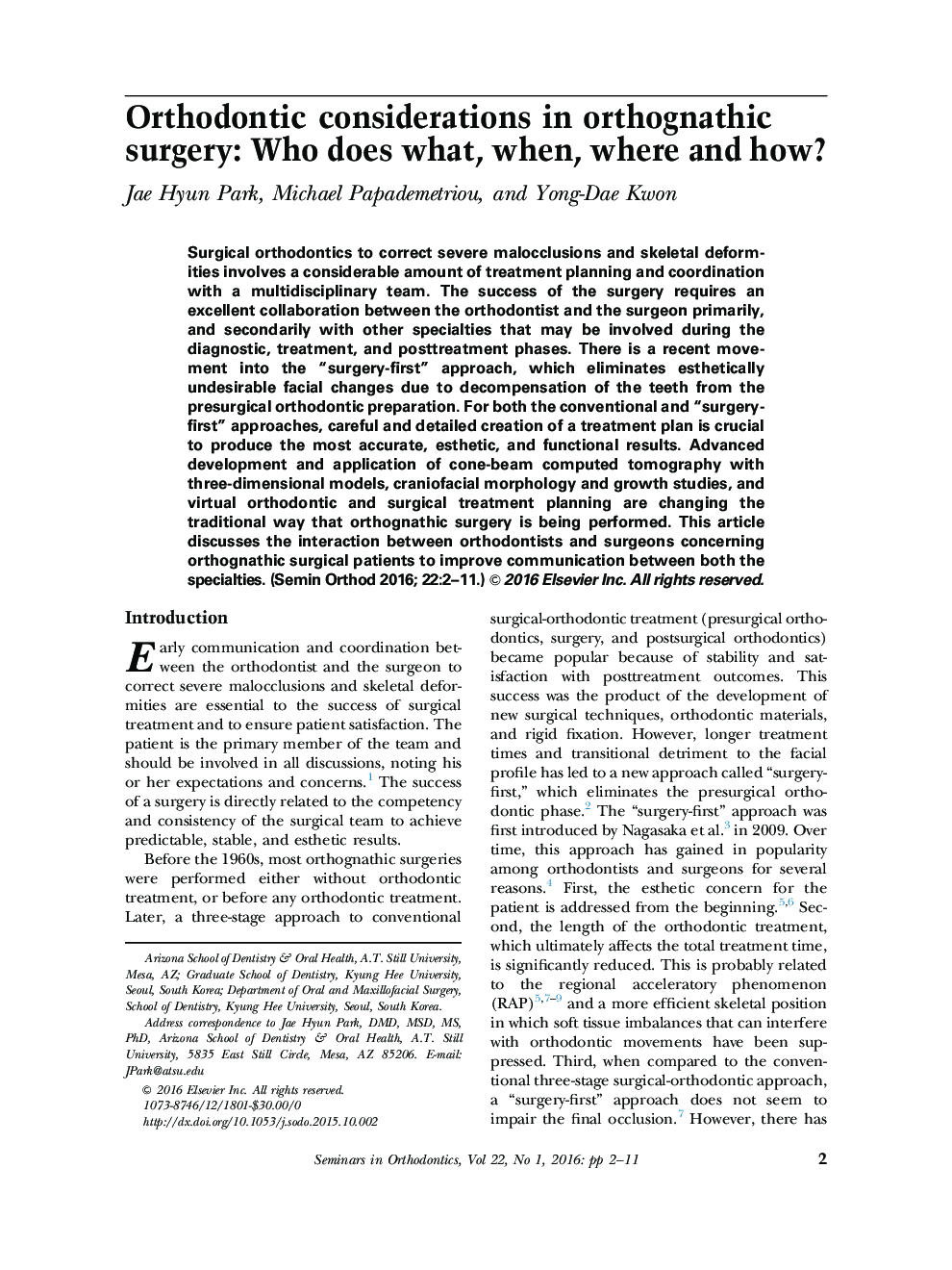| Article ID | Journal | Published Year | Pages | File Type |
|---|---|---|---|---|
| 3175331 | Seminars in Orthodontics | 2016 | 10 Pages |
Surgical orthodontics to correct severe malocclusions and skeletal deformities involves a considerable amount of treatment planning and coordination with a multidisciplinary team. The success of the surgery requires an excellent collaboration between the orthodontist and the surgeon primarily, and secondarily with other specialties that may be involved during the diagnostic, treatment, and posttreatment phases. There is a recent movement into the “surgery-first” approach, which eliminates esthetically undesirable facial changes due to decompensation of the teeth from the presurgical orthodontic preparation. For both the conventional and “surgery-first” approaches, careful and detailed creation of a treatment plan is crucial to produce the most accurate, esthetic, and functional results. Advanced development and application of cone-beam computed tomography with three-dimensional models, craniofacial morphology and growth studies, and virtual orthodontic and surgical treatment planning are changing the traditional way that orthognathic surgery is being performed. This article discusses the interaction between orthodontists and surgeons concerning orthognathic surgical patients to improve communication between both the specialties.
